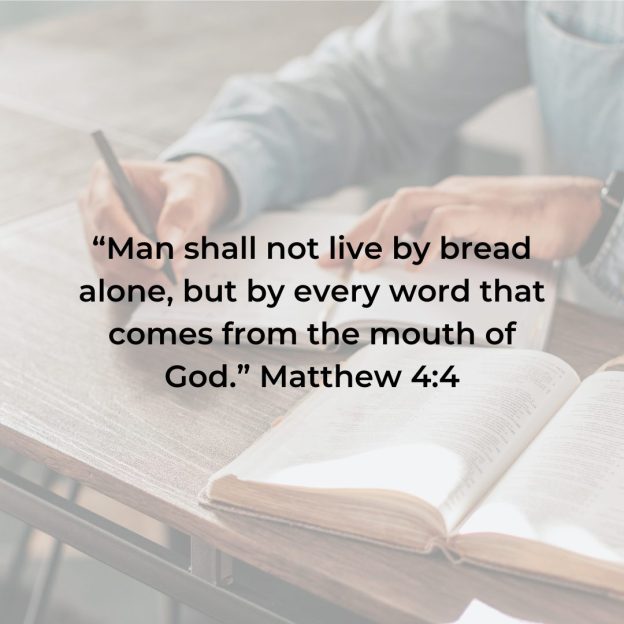History of the New Testament

27 books.
260 chapters.
Written by fishermen, tax collectors, apostles, and martyrs.
The second half of the Christian canon, the New Testament, is a collection of books and letters written by various authors, spanning the birth, life, death, resurrection, and ascension of Jesus Christ. In addition, the New Testament covers the establishment and the advancement of the Church, instruction for living in the world as God’s image bearers, and God’s ultimate plan to establish a new Heaven and Earth.
The New Testament represents the fulfillment of the Old Testament in Jesus Christ and the unveiling of God’s Kingdom on Earth through His Body, the Church.
It’s a beautiful collection of writings filled with mystery and wonder.
However, some questions surround the New Testament, such as:
- Who wrote the New Testament?
- Who chose what books make up the New Testament?
- How do we engage with its teachings?
In this article, we will look at the history of the New Testament, who wrote it, how it was compiled, and how we are to engage with it as followers of Jesus today.
Who Wrote the New Testament?
The New Testament was written by various authors, each writing to a unique audience and with a specific purpose.
The New Testament opens with four Gospel accounts written by four of Jesus’ disciples, Matthew, Mark, Luke, and John. Moving forward, the book of Acts shows an account of the disciple’s work in building and shepherding the early church, along with early mission trips to advance the Gospel message. The New Testament continues with various letters written by the Apostle Paul to church communities and fellow laborers within the church. There are also multiple letters written by Peter, a disciple of Jesus, and James and Jude, brothers of Jesus. The Book of Revelation, written by John the Beloved, rounds out the New Testament with an apocalyptic view of God’s redemptive plan to restore all things to Himself, fully establishing His Kingdom on the earth.
With various authors writing to specific audiences, each book of the New Testament provides us with a unique perspective into the life of Jesus, His followers, and the advancement of the Gospel message throughout the world.

Who Chose What Books Make Up the New Testament?
The books are not arranged chronologically in the New Testament. The Epistles of Paul, which address the immediate problems of local churches shortly after Christ’s death, are considered the earliest texts. The books are instead arranged in a more logical narrative order: the Gospels telling the life of Jesus and his teachings; the Acts detailing the work of Christ’s followers in propagating the Christian faith; the Epistles teaching the meaning and implications of the faith; and Revelation prophesying future events and the culmination of the divine purpose.
The New Testament was compiled in this way to articulate the Gospel story in a more narrative, flowing form. While each of the 27 New Testament books was written by the end of the 1st century, these books were not canonized until much later.The first “canon” was the Muratorian Canon, compiled in AD 170. The Muratorian Canon included all New Testament books except Hebrews, James, 1 and 2 Peter, and 3 John. In AD 363, the Council of Laodicea stated that only the Old Testament (along with one book of the Apocrypha) and 26 New Testament (everything but Revelation) were canonical and to be read in the churches. The Council of Hippo (AD 393) and the Council of Carthage (AD 397) also affirmed the same 27 books as authoritative.
During this time, the Church declared each of the 27 books of the New Testament to be authoritative and divinely inspired. And while human error is unavoidable, God’s sovereign ability to ensure the canon was established through His wisdom is without question.
How Do We Engage with the Teachings of the New Testament?
Where to Start Reading and Studying the New Testament?
To begin reading and studying the New Testament, consider starting with the Gospel of Mark. Concise and engaging, this Gospel narrative covers the life and ministry of Jesus from start to finish in 16 chapters. Keep a notebook nearby to write down your questions and reflections as you read. Discuss your questions and reflections with your local church and pastors.
A vital part of our lives as followers of Jesus is being connected to a local church. The church provides us with a community of believers on the same path. Your pastors and church family can also recommend helpful study guides, commentaries, and resources to deepen your understanding of the New Testament. Engaging with the teachings of the New Testament within a Christian community helps to ensure we are developing a belief system that is both Biblically based and theologically sound.
When we read the New Testament, we must come with an open heart and a willingness to engage with the Scriptures. Pray for guidance and understanding, inviting God to speak to you through His Word. And remember, reading the New Testament isn’t just to acquire information; it’s to experience transformation.
Practical Tips for Understanding Difficult Passages in the New Testament
When encountering difficult Scripture passages, read a few verses before and after. This helps contextualize the problematic course, providing a deeper understanding of what the Scripture is saying.
A few important questions to ask when reading the New Testament are:
- Who is writing?
- Who are they writing to?
- What was going on at this point in history?
Answering these three questions will provide historical context for the Scripture, helping you better understand the passage’s purpose and meaning.
It’s also helpful to consult multiple Bible translations and commentaries. This will help you to engage with the Scripture and better understand the context in which the passage was written.
Remember that some passages may use figurative or symbolic language, so it’s important to distinguish between the literal and the metaphorical. Be patient and give yourself grace as you encounter the mystery and beauty of the New Testament writings. Trust that with continued study, the New Testament’s teachings will become more evident over time, and God will be faithful to transform you daily through His Word.
Ready to Learn More?
Understanding the New Testament is vital to our faith as followers of Jesus.
If you’d like to take a deep dive into the history of the New Testament, we encourage you to check out our online course: Jewish and Greco-Roman Backgrounds of the New Testament.
In this course, Dr. Matthew Halsted gives you a first-class ticket from the twenty-first century to the era of Jesus and the first Christians. He introduces you to the historical, theological, and social environment surrounding the New Testament period.
With over 8 hours of video content, you’ll explore topics such as:
- Hermeneutics
- Messianism
- Hellenization and Jewish Faithfulness
- Living among the Gods
- And much more!
If you’re ready to take your study of the New Testament to the next level, click here.
Search Keywords
Recent Posts
Top Women Leaders in the Bible
Author and theologian Lewis B. Smedes said From the outset, women are portrayed as essential...
The Power of Forgiveness in the Bible
Author and theologian Lewis B. Smedes said To forgive is to set a prisoner free and discover that...
How to Choose the Right Online Bible Study
Now more than ever, access to quality, online Bible study programs is right at our fingertips. The...
Online Bible Study Tools
Charles Spurgeon once said “Nobody ever outgrows Scripture; the book widens and deepens with our...

